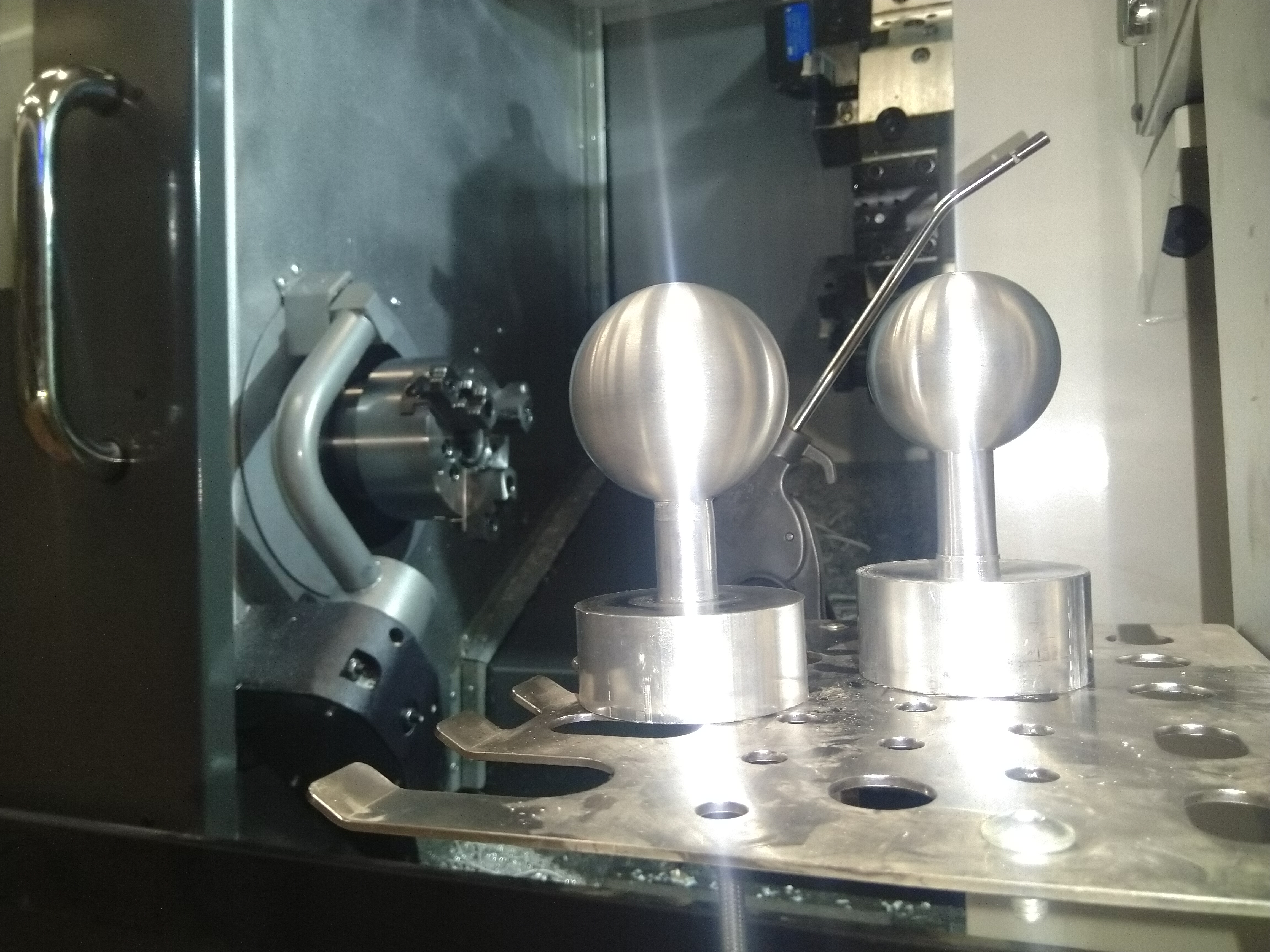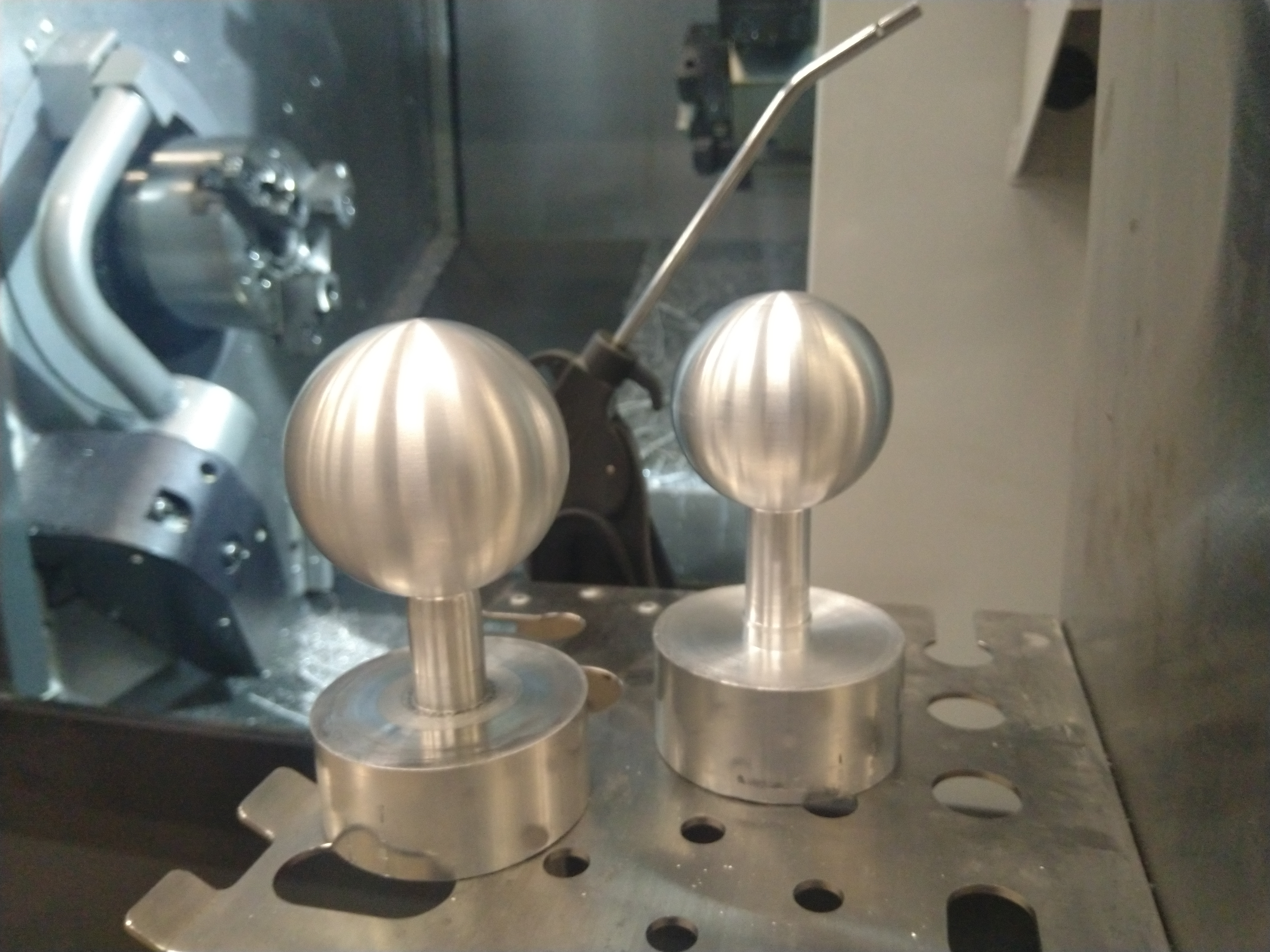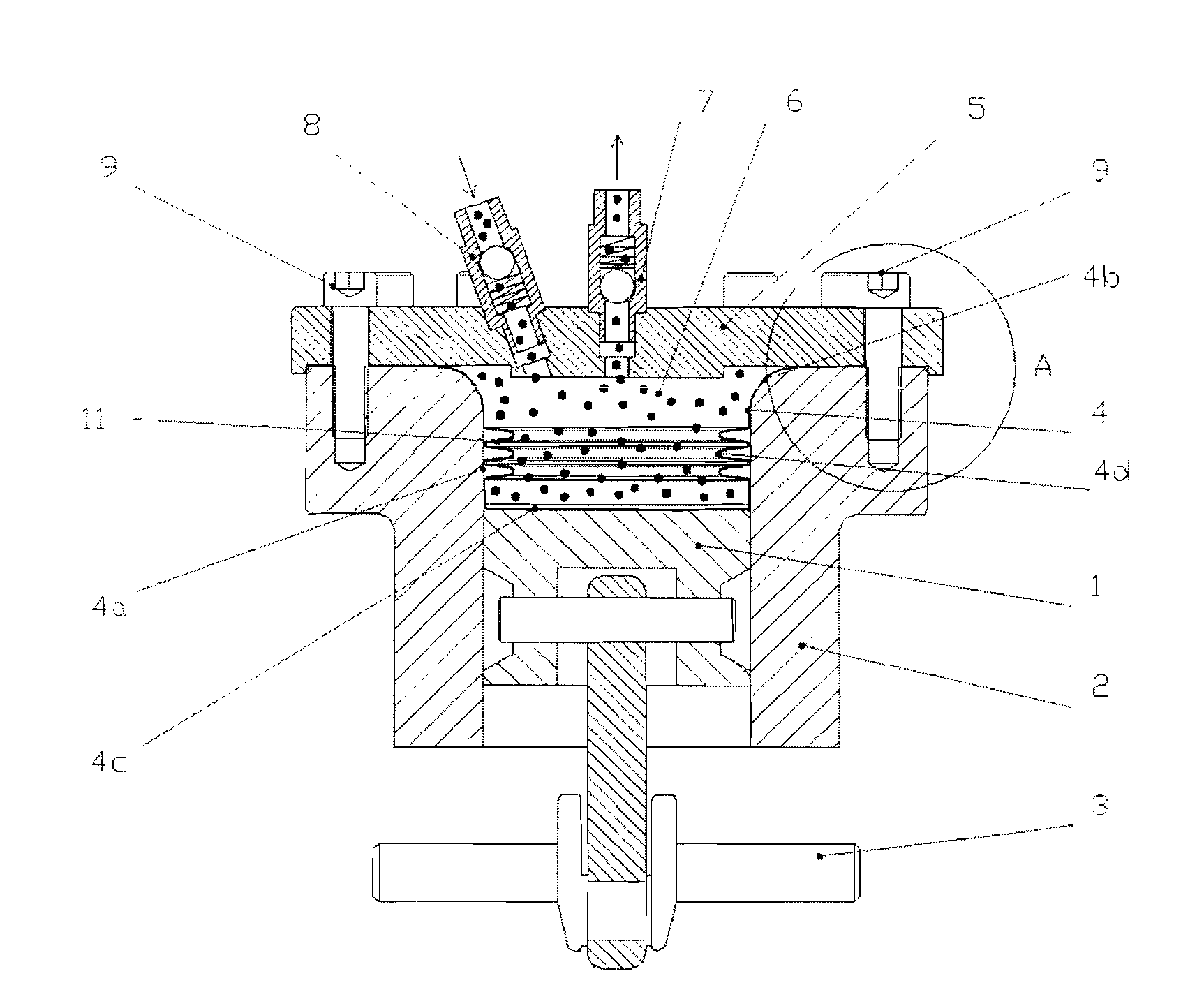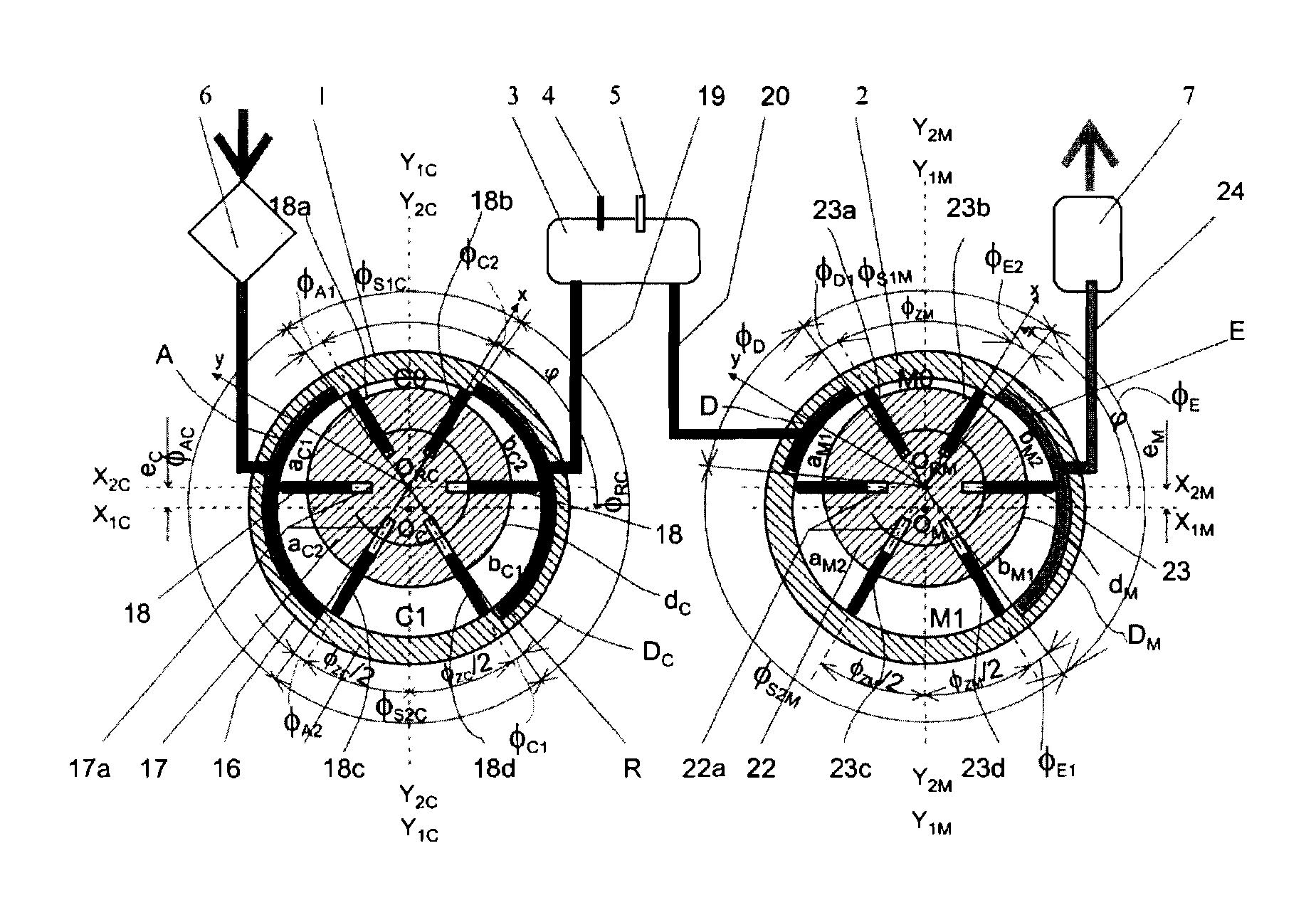Turning spheres on a lathe, as with most other profiled surfaces, needs a bit more attention to the tool nose radius. If the trajectory of the tool isn't compensated to consider the radius of the insert of the turning tool, than we get a different profile than what we program. This means that if spheres are programmed without G41 and G42 and the correct offset for the insert, then the result is something of a distorted sphere.
The spheres in the images are 50 and 58 mm in diameter and started out as 60 mm stock aluminum alloy. The program was written using Notepad++ in G-code and uses roughing (G71 and G72) and finishing cycles (G70) for easier programming and better readability.


Discrete element method simulation software deSphere to get new features for version 3
deSphere is MHC Reasearch's proprietary software product designed to simulate powder materials such as rocks, chemicals and food products. It can simulate their flow, mixing and packing.
Version 3 will introduce:
- moving and vibrating machinery simulation capabilities;
- nearest neighbors identification for significantly reduced simulation times;
- parallel computing capabilities for short program runs.
Features that are currently considered for version 4 release include:
- bodies made of multiple spheres;
- simulation of stresses, strains and fractures in bodies;
- simulation of deformable bodies;
- fragment separation from bodies following impact, high stress etc.;
- fluid flow (CFD);
- multiphysics simulations.
Kuka KR210 Industrial Robot Milling
I have been working together with my colleagues from Taparo SA to design and build a plywood mold for thermoforming of a hemp composite chair. The mold is made of several sheets of plywood glued and bolted together. The sheets were designed individually and profiled by milling using one of the Kuka KR210 Robots.
The actual programming and simulation were done using SprutCAM Robot which is a CAM Software specifically designed for controlling robotic fabrication processes. One advantage of the robot compared to a milling machine with a similar working envelope is its lower cost. However the robot isn't as rigid and precise, but this is not a problem, since wood cutting generates low forces and doesn't require the same precision as cutting metals usually does.
The video presents the programming and simulation of wood milling using a Kuka KR210 industrial robot and SprutCAM Robot and the actual cutting of the material.
Great news: I've been recently awarded 2 patents by the Romanian Office for Inventions and Trademarks:
1. Sealing System for High Pressures (RO130127A2);
2. Method for Producing Mechanical Work and Rotary Heat Engine for Applying Said Method (RO129731A2).
1. Sealing System for High Pressures (RO130127A2)
Inventor: Mihai Ciupan
Applicant: Mihai Ciupan

Abstract:
The invention relates to a sealing system which can be used in the construction of a hydraulic or pneumatic pump or motor, preferably operating at relatively high pressures. According to the invention, the system comprises a cylinder (2) wherein a piston (1) slides driven by a crank shaft (3), having a tight chamber of variable volume (6) confined by a membrane (4) and a cover (5), as well as a metallic membrane (4) of a shape of revolution, having a cylindrical part with a corrugated zone (4a) playing the role of a spring, at one end having a flanged edge (4b) by means of which it is tightly fixed between the cylinder (2) and the cover (5), using some screws (9) while, at the other end (4c) facing the piston (1), the membrane (4) may be either closed or open.
2. Method for Producing Mechanical Work and Rotary Heat Engine for Applying Said Method (RO130127A2)
Inventors: Cornel Ciupan, Emilia Ciupan, Mihai Ciupan
Applicants: Cornel Ciupan, Emilia Ciupan, Mihai Ciupan

Abstract:
The invention relates to a method for producing mechanical work and to a rotary heat engine for applying said method, meant to drive transportation means or tools, equipments, installations or various working machines. The claimed method uses a combination between a compressor and a rotary displacement engine, the combustion of the fuel takes place in an external combustion chamber at a high pressure ranging between 0.6 and 50 Mpa, the flue gases acting directly on the rotary displacement engine or only after they pass through a vaporizer wherein water is introduced and overheated vapours which increase the gas flow rate are produced. The claimed engine for applying said method consists of a rotary compressor with blades, a rotary engine, some blades and a combustion chamber provided with fuel supplying system and an ignition system, the gases produced in the combustion chamber and the vaporizer acting on the blades of the engine, producing mechanical work.
Other articles
→ Some of the greatest ice caves in the world